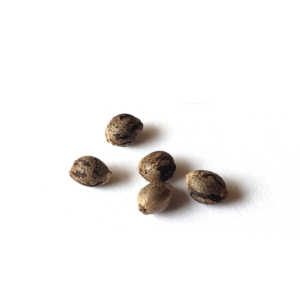Imagine the intoxicating fragrance of a blooming lavender field, the pungent odour of fresh-cut pine, or the zingy scent of peeled citrus fruits. These captivating aromas are all thanks to terpenes, nature’s very own perfumers. But did you know these same aromatic wonders also play a starring role in the world of cannabis?
That’s right, these complex compounds not only give cannabis its distinctive fragrances but also contribute to the plant’s therapeutic qualities.
Key Takeaways on Cannabis Terpenes
Discover the aromatic wonders of terpenes in cannabis, responsible for its unique smells and flavors as well as potential health benefits.
Experience the synergy between terpenes and cannabinoids known as the entourage effect that amplifies therapeutic qualities.
The Discovery of Cannabis Terpenes

Terpenes are the unsung heroes of the cannabis plant. These aromatic compounds bestow upon each strain its unique bouquet of smells and flavors, including:
the citrusy notes of limonene
the earthy undertones of myrcene
the piney aroma of pinene
the peppery scent of caryophyllene
But their role extends beyond sensory delight. Like the plant’s personal bodyguards, cannabis terpenes ward off predators, attract pollinators, and contribute to the plant’s immune system.
Within the cannabis plant, terpenes serve as the chemical compounds that endow strains with their unique flavors and scents. Beyond merely enriching the sensory experience, terpenes have a key role in the plant’s propagation and survival. Some of the functions of terpenes include:
Attracting pollinators
Defending against herbivores and pests
Enhancing the plant’s ability to absorb light
Regulating the plant’s temperature
Acting as a natural sunscreen
These aromatic compounds are crucial for the cannabis plant’s growth and survival.
Beyond their ecological function, many terpenes found in cannabis have been linked to potential health benefits. For instance, some terpenes have been found to possess anti-microbial and pathogen-combating properties. However, research into their medicinal properties is still in its infancy, and further studies are needed to fully understand their potential health benefits.
The Synergy Between Terpenes and Cannabinoids
Terpenes and cannabinoids may seem like two distinct entities in the cannabis world, but they share a closer relationship than you might think. Like a well-choreographed dance, these compounds work together in harmony, enhancing each other’s therapeutic qualities, in a phenomenon known as the entourage effect.
Terpenes may not possess the psychoactive effects that cannabinoids are known for, but their subtle influence on our mood, coupled with the modification of aroma and experience of consuming medical cannabis, make them essential players in the cannabis experience. They interact with cannabinoids and other cannabis compounds to produce nuanced distinctions in our experience, thereby augmenting the therapeutic effects of cannabis. In this context, terpenes play a crucial role in enhancing the overall benefits of medical cannabis.
However, while anecdotal evidence supports the role of terpenes in influencing the effects of different cannabis strains, scientific validation of these claims is still ongoing. More research is needed to fully validate the role of terpenes in the entourage effect and their influence on the therapeutic effects of cannabis.
Modulation of Psychoactive Effects
Cannabinoids like THC are usually the focal point of discussions on the psychoactive effects of cannabis. However, terpenes also have a part in influencing these effects.Terpenes can modulate the psychoactive effects of THC by interacting with the CB1 receptor, a key player in the psychoactive effects of cannabis.
This potential interchange between terpenes and the CB1 receptor can alter the interaction between THC and the receptor, possibly impacting the psychoactive effects of THC. In particular, terpenes such as:
myrcene
limonene
pinene
linalool
are known to modulate these effects.
Terpenes impact the psychoactive effects by interacting with a variety of receptors, including G-protein-coupled receptors (GPCRs) like opioid receptors and CB1/2 receptors. Additionally, they may provide their own biological effects independent of the cannabinoids present in cannabis.
Enhancing Therapeutic Qualities
While terpenes may modulate the psychoactive effects of cannabis, their role in enhancing the therapeutic qualities of cannabinoids is equally significant. Terpenes have been found to amplify the therapeutic effects of cannabinoids, including providing pain relief and anti-inflammatory properties.
Specifically, terpenes contribute to the anti-inflammatory properties of cannabinoids, thus amplifying their therapeutic effects. Specifically, the following terpenes have been identified as terpenes that can boost the therapeutic effects of cannabinoids:
Myrcene
Limonene
Pinene
Linalool
Studies have indicated that terpenes and terpenoids can exhibit anti-inflammatory and antinociceptive activities, with beta-caryophyllene (BCP) specifically demonstrating anti-inflammatory effects.
Terpenes and terpenoids have also been found to be involved in suppressing inflammation mediated by microglia.
Cannabis Terpene Profiles Across Different Marijuana Strains

Similar to how each cannabis strain possesses its unique aroma and flavor, it also has its distinct terpene profile. This profile, akin to a fingerprint, is a unique blend of terpenes present in each strain, which determines its aroma and effects.
Here is a selection of 6 strains we offer, and their unique terpene profiles, just so you get an idea of how they differ.
- Northern Lights: Often rich in myrcene, caryophyllene, and pinene.
- Gorilla Glue: Typically contains high levels of caryophyllene, limonene, and myrcene.
- Amnesia Haze: Commonly has pinene, caryophyllene, and myrcene.
- White Widow: Usually features myrcene, pinene, and caryophyllene.
- Jack Herer: Often rich in terpinolene, caryophyllene, and myrcene.
- Zkittlez: Known for its caryophyllene, humulene, and linalool.
But what influences these terpene profiles?
Genetics play a major role in shaping the terpene profile of cannabis strains. Variations in the genetics of cannabis plants can result in different types and concentrations of terpenes produced. Breeders often utilize genetic methods to cultivate cannabis strains with desired terpene profiles.
However, genetics aren’t the sole influence on the terpene profile. Environmental variables that can significantly affect terpene production in cannabis include:
Light exposure
Temperature
Growth methods
Nutrient levels
Harvest practices
Influences on Cannabis Terpene Levels
A multitude of factors can influence terpene production in cannabis plants. Some of these factors include:
Growing environment (indoors or outdoors)
Light exposure
Temperature
Type of growing medium utilized
Nutrient levels
Harvest timing
All of these variables can impact the quantity of terpenes a cannabis plant produces.
Creating the perfect conditions for terpene production can require careful balancing. Here are some factors to consider:
High-quality soil with optimal pH and alkalinity levels can nourish the plant.
Maintaining a preferably lower temperature can help deter terpene evaporation.
Protection from environmental factors such as oxygen, heat, humidity, and light can preserve the terpene profile.
Even exposure to light can directly affect the synthesis of terpenes in cannabis. For example, heightened UV exposure can lessen the overall terpene content in inflorescences, while blue light may boost the concentration of specific terpenes, like cannabigerol (CBG).
Standard Cannabis Extraction Processes
The extraction process of cannabis isn’t solely about isolating the desired compounds—it’s also concerned with maintaining the integrity of the terpene profile. Unfortunately, many terpenes are volatile compounds. These compounds are easily lost during standard cannabis extraction processes..
On a positive note for terpene enthusiasts, some extraction methods, such as the production of live resin, place a priority on preserving terpenes. By keeping temperatures low during extraction, these processes help maintain the terpenes and other volatile compounds in the plant, resulting in a more aromatic and flavorful cannabis experience.
Different extraction methods can have varying effects on the terpene profiles of cannabis. For instance, CO2 extraction is known to preserve terpenes as it is a cold separation process that can protect delicate plant compounds. On the other hand, other extraction methods may result in reduced terpene profiles.
The Entourage Effect: Terpenes and Cannabinoids Working Together

One of the most powerful takeaways from recent research on cannabis terpenes is their synergistic relationship with cannabinoids like THC and CBD, known as the “entourage effect.” This research suggests that terpenes may play a significant role in enhancing or modulating the effects of cannabinoids, potentially affecting the overall therapeutic and experiential properties of cannabis.
This finding emphasizes the importance of considering the entire spectrum of compounds in cannabis, rather than focusing solely on cannabinoids, for a more comprehensive understanding of its effects and potential medical benefits.
The entourage effect is a concept that suggests that terpenes and cannabinoids work together to produce a more effective therapeutic outcome than if they were consumed separately.
Terpenes might intensify the effects of cannabinoids by interacting with the body’s receptors and potentially heightening cannabinoid activity. This combined effect of cannabinoids and terpenes is thought to amplify the mood-stabilizing effects and efficacy of cannabis products.
However, similar to numerous facets of cannabis science, the evidence backing the entourage effect is still unfolding. While anecdotal evidence suggests a synergistic relationship between terpenes and cannabinoids, more research is needed to fully validate these claims and understand the mechanisms behind this phenomenon.
The Medicinal Potential of Cannabis Terpenes

The potential medicinal advantages of cannabis terpenes, including their therapeutic properties, are garnering growing attention within scientific and medical communities. From targeting cancer cells to interacting with the endocannabinoid system, the potential of these aromatic compounds is promising.
For instance, certain terpenes, like caryophyllene, have demonstrated potential in handling conditions related to inflammatory symptoms. Other terpenes have been suggested to possess potential benefits for sleep disorders. For instance, compounds found in cannabis, such as CBD and THC, may improve sleep. Studies have shown that 71% of patients using cannabis products for sleep reported improved sleep.
In addition to these conditions, research suggests that caryophyllene may be effective in relieving symptoms associated with a variety of conditions, including:
colitis
diabetes
cerebral ischemia
anxiety and depression
liver fibrosis
Alzheimer-like diseases
Targeting Cancer Cells
Among the potential therapeutic advantages of terpenes, their function in cancer treatment is notably intriguing. Some terpenes, such as limonene, have shown potential in inhibiting cancer cell growth without affecting healthy cells.
Specific terpenes have been found to have anti-cancer activity in cannabis. For instance, limonene, pinene, camphor, terpinene, and beta-myrcene have been reported to have anti-cancer properties. Moreover, research indicates that camphor inhibits the growth of human breast cancer cells, terpinene inhibits the growth of human lung cancer cells, and beta-myrcene inhibits the growth of human prostate cancer cells.
Recent scientific investigations have suggested that α-pinene potentially possesses anti-cancer activity. It has been observed to activate NK cells and enhance NK cell cytotoxicity, implying its potential as a cancer treatment compound. Moreover, preclinical studies have demonstrated that pinene can trigger apoptosis, inhibit cell proliferation, and suppress tumor growth in animal models.
Furthermore, α-pinene has been shown to effectively curb the growth of human prostate cancer xenografts in nude mice.
Interaction with the Endocannabinoid System
Beyond their potential anti-cancer properties, terpenes also interact with the endocannabinoid system (ECS), a physiological system responsible for regulating and balancing essential bodily functions. Terpenes stimulate cannabinergic or TRP channel-mediated signaling in the human body, potentially having poly-pharmacological effects and enhancing the effects of cannabinoids like THC.
It is hypothesized that terpenes activate CB1 receptors at 10-50% of the activation level by THC alone. The implications of this activation are yet to be fully understood, however, it is thought to augment the overall therapeutic effects of cannabis by regulating the interaction between THC and its endogenous receptor.
Similar to cannabinoids, terpenes interact with the endocannabinoid system to produce a synergistic effect and potentially enhance the effects of cannabinoids. They interact with the body’s receptors and neurotransmitters to produce various effects, including:
Anti-inflammatory effects
Pain relief
Relaxation
Improved mood
Enhanced focus and concentration
Though they do not possess the psychoactive properties of cannabinoids.
Terpenes Beyond Cannabis: A World of Aromatic Compounds
While terpenes have a substantial role in the cannabis plant, they are definitely not confined to it. In fact, terpenes are found in a variety of other plants, offering a world of aromatic compounds beyond cannabis.
These aromatic compounds found in essential oils are the primary constituents responsible for the distinctive aromas of many plants, fruits, and herbs. For instance, limonene lends its citrusy aroma to lemons, while sabinene is found in oil-containing plants like tea tree.
Beyond their aromatic qualities, terpenes from other plants may also provide potential health benefits. For instance, terpenes from sources other than cannabis may provide anti-inflammatory support, relaxation, pain relief, and sedation. Moreover, they may possess anti-bacterial, anti-microbial, anti-cancer, and antioxidant properties.
Common plant sources of terpenes encompass tea, thyme, and forest aerosols.
Innovations in Terpene Enrichment
With growing understanding of terpenes’ therapeutic potential grows, so does the interest in utilizing their power. This has led to innovations in terpene enrichment, which focuses on enhancing the therapeutic effects of cannabis extracts by adding selected terpenes to the final product.
The most recent methods for terpene enrichment in cannabis extracts include:
Enriching the extracts with specific terpenes
Utilizing advanced extraction techniques for the extraction of phenolic compounds and terpenes
Combining the extract with bleaching clay to enrich it with certain terpenes
These innovations aim to amplify the effects of cannabinoids, augment their potency, and offer a more effective therapeutic outcome compared to cannabinoids alone.
Despite these advances, hurdles still exist when trying to enrich terpenes in cannabis. These include:
Ensuring safety and reproducibility of the enriched extracts
Managing variations in terpene profiles
Understanding the factors that influence terpene diversity
Adhering to legal regulations and consumer preferences
Achieving desired cannabimimetic effects
Balancing the entourage effect.
The Growing Role of Terpenes in the Cannabis Industry
Given their aromatic appeal, potential therapeutic advantages, and their part in enriching the overall cannabis experience, it’s unsurprising that terpenes are rising to prominence in the cannabis industry.
Terpenes have become increasingly important in the medical cannabis industry as they may have therapeutic benefits and can improve the cannabis experience. Their influence on the aroma, flavor, and effects of cannabis strains can improve treatments for various conditions such as:
pain
inflammation
depression
anxiety
addiction
epilepsy
cancer
The cannabis terpenes market is rapidly growing and evolving, with an estimated market value of $20 billion by 2024. Furthermore, the terpenes market is predicted to witness a significant compound annual growth rate (CAGR) of 5.49% in the coming years.
Summary
In the captivating world of cannabis, terpenes are the unsung heroes, bestowing each strain with unique aromatic profiles and potential therapeutic benefits. As we continue to explore their role in enhancing the cannabis experience, from their interaction with cannabinoids in the entourage effect to their potential health benefits, the importance of terpenes is becoming more apparent. As the cannabis industry continues to grow, so too will our understanding of these aromatic wonders.
Frequently Asked Questions
What do terpenes do for your high?
Terpenes do not produce a high on their own, but they can potentially enhance the feeling of being high that is caused by THC. This effect is known as the entourage effect and it implies that terpenes alter or enhance the effects of THC and CBD in the body. Evidence from research supports this claim.
Are terpenes healthy?
Terpenes have been linked to many positive health benefits, such as helping people sleep better and boosting their energy levels. Research has found that terpenes can be a viable alternative treatment for several diseases and the aroma produced by certain terpenes can also have an effect on people’s mood. Therefore, it is safe to say that terpenes are generally healthy.
What do terpenoids do in humans?
Terpenoids possess a wide range of biological activities including anticancer, antimicrobial, anti-inflammatory, antioxidant, and antiallergic properties, which makes them useful in the fight against cancer, malaria, inflammation, and infectious diseases.
What are terpenes and in which other plants besides cannabis are they found?
Terpenes are aromatic compounds found in various plants, including cannabis, lemons and other plants with sabinene-containing oil. They have different purposes, such as attracting bees and repelling predators.
What are the most recent methods for terpene enrichment in cannabis extracts?
Recent methods for terpene enrichment in cannabis extracts include enriching with specific terpenes, advanced extraction techniques for phenolic compounds and terpenes, and combining the extract with bleaching clay.










